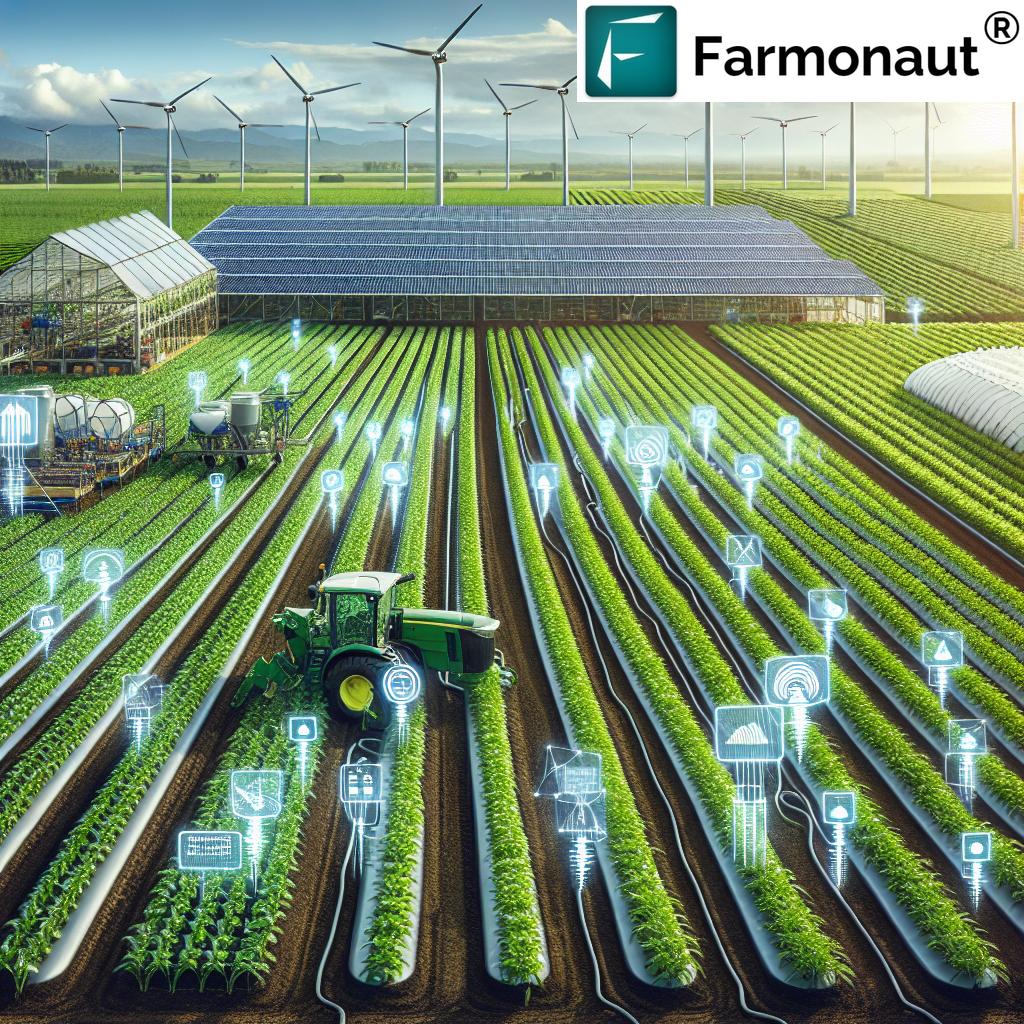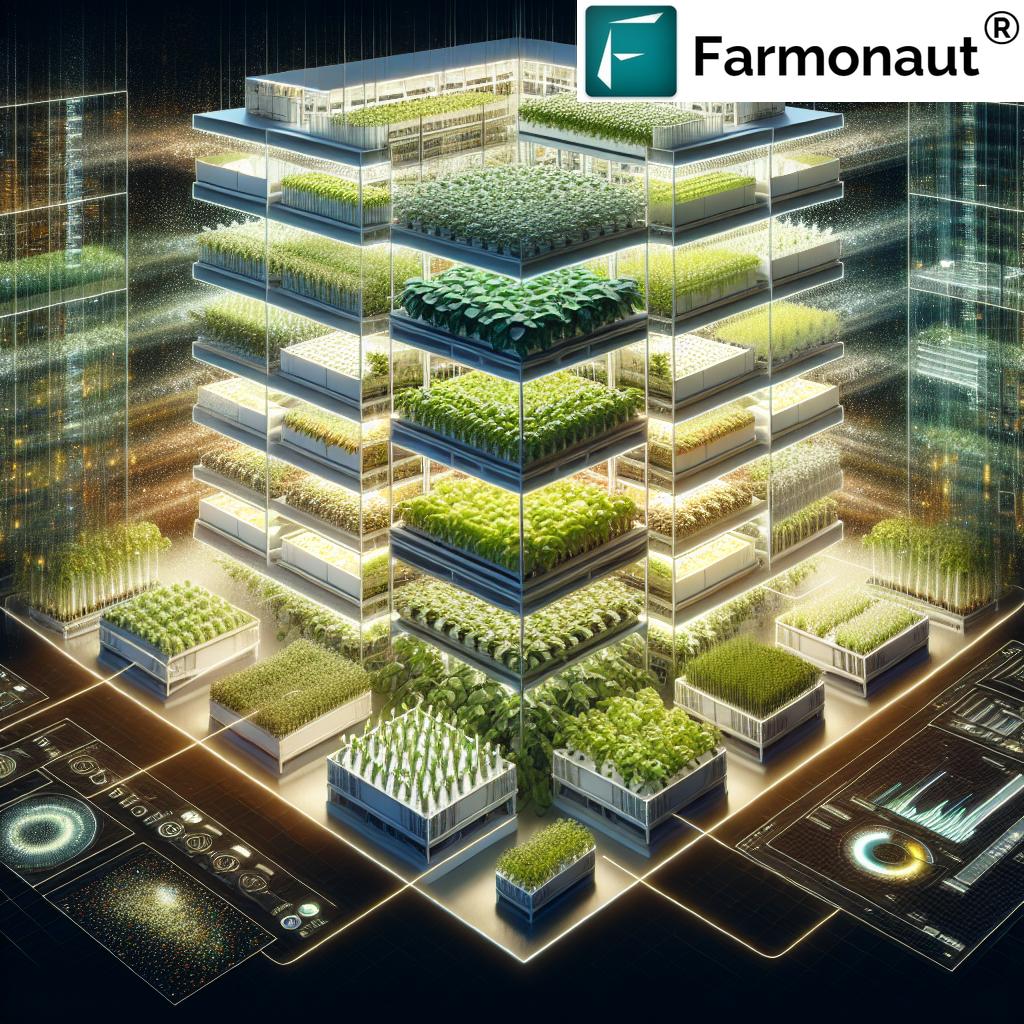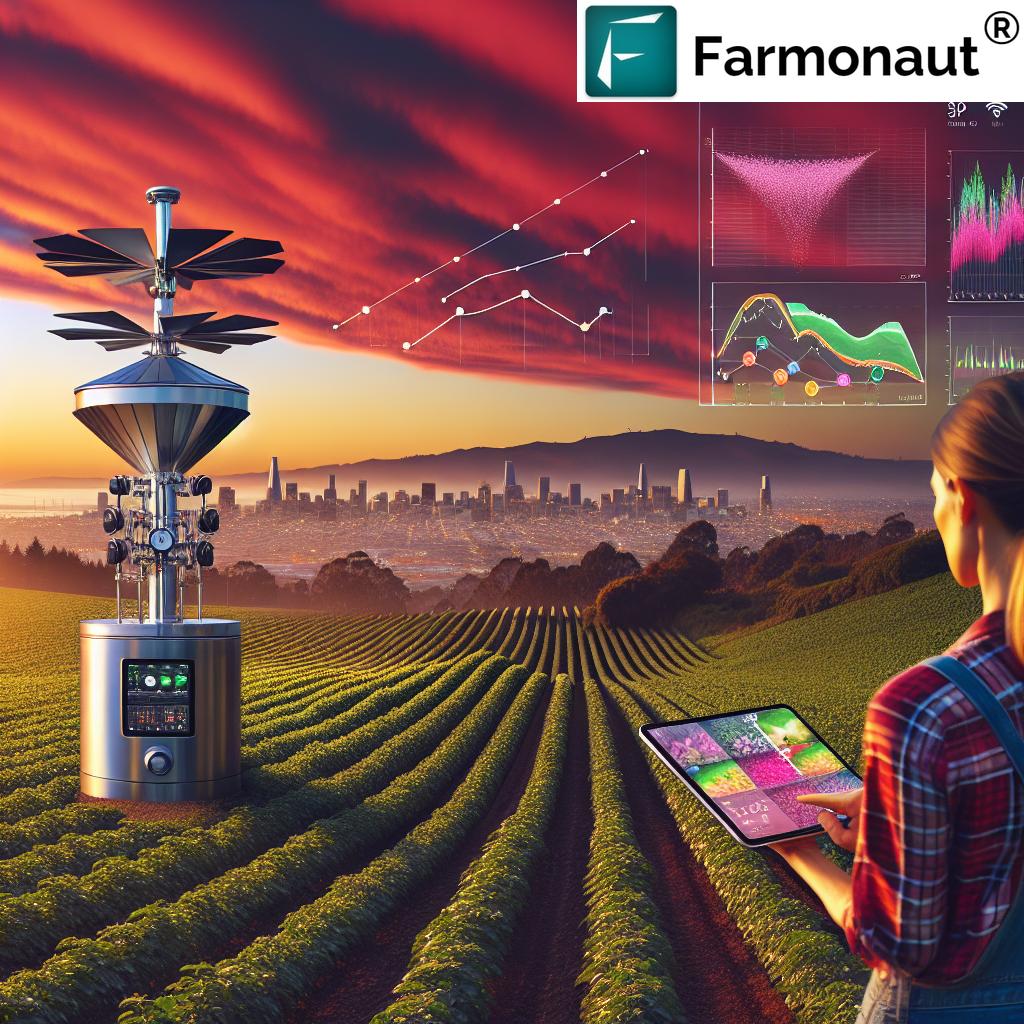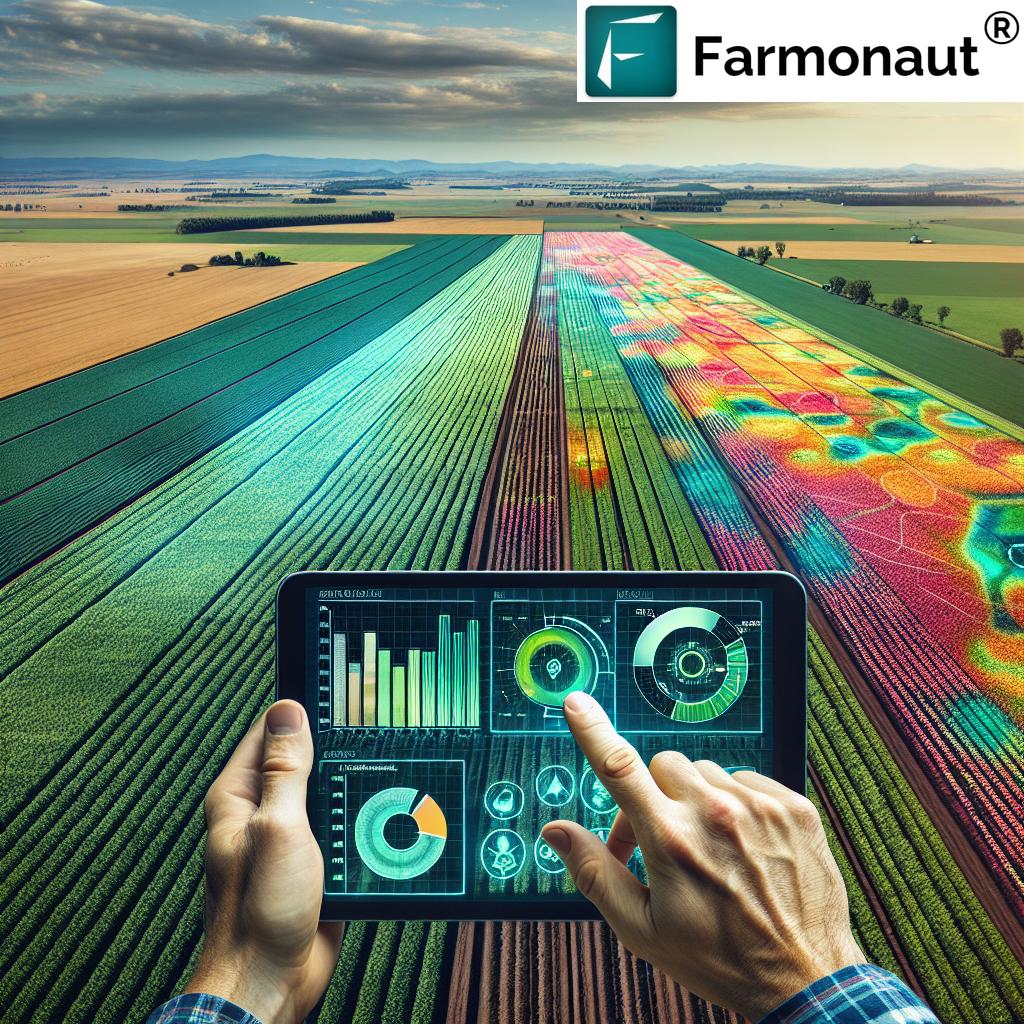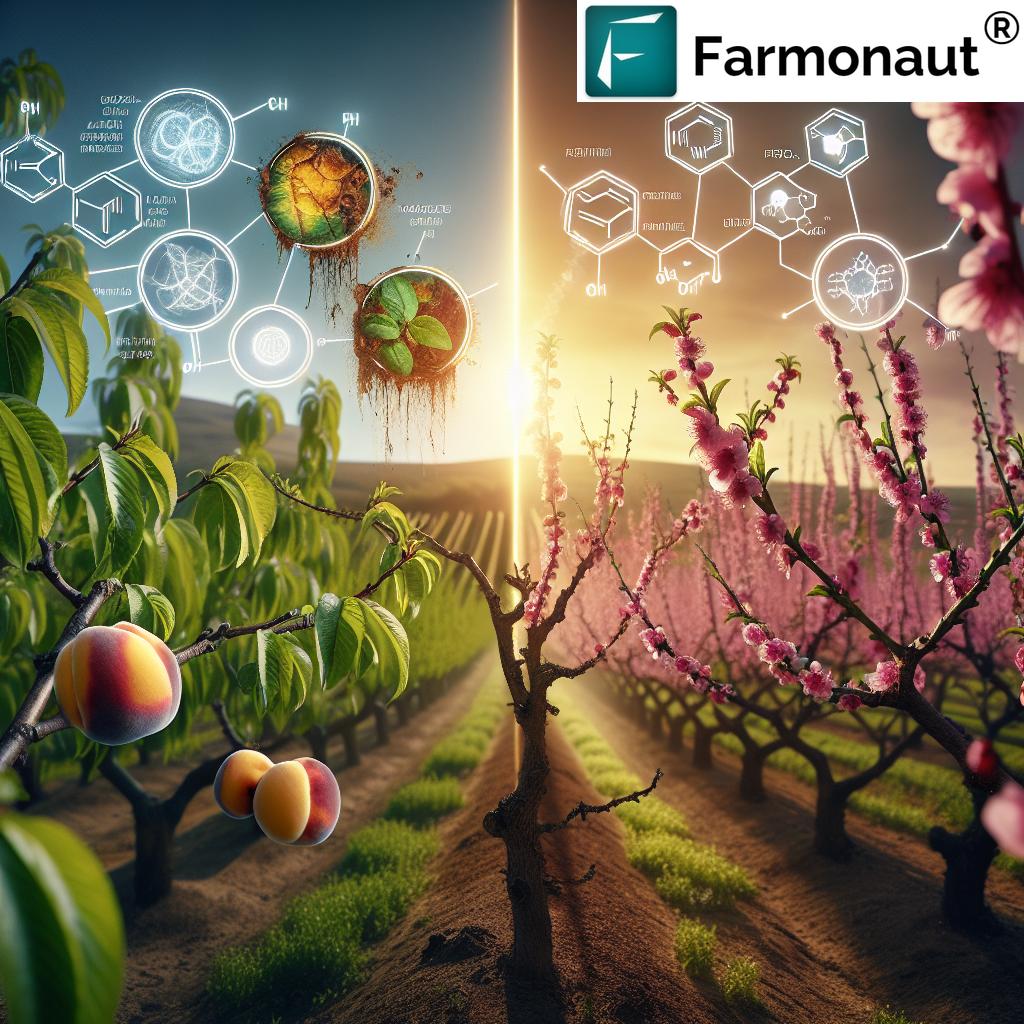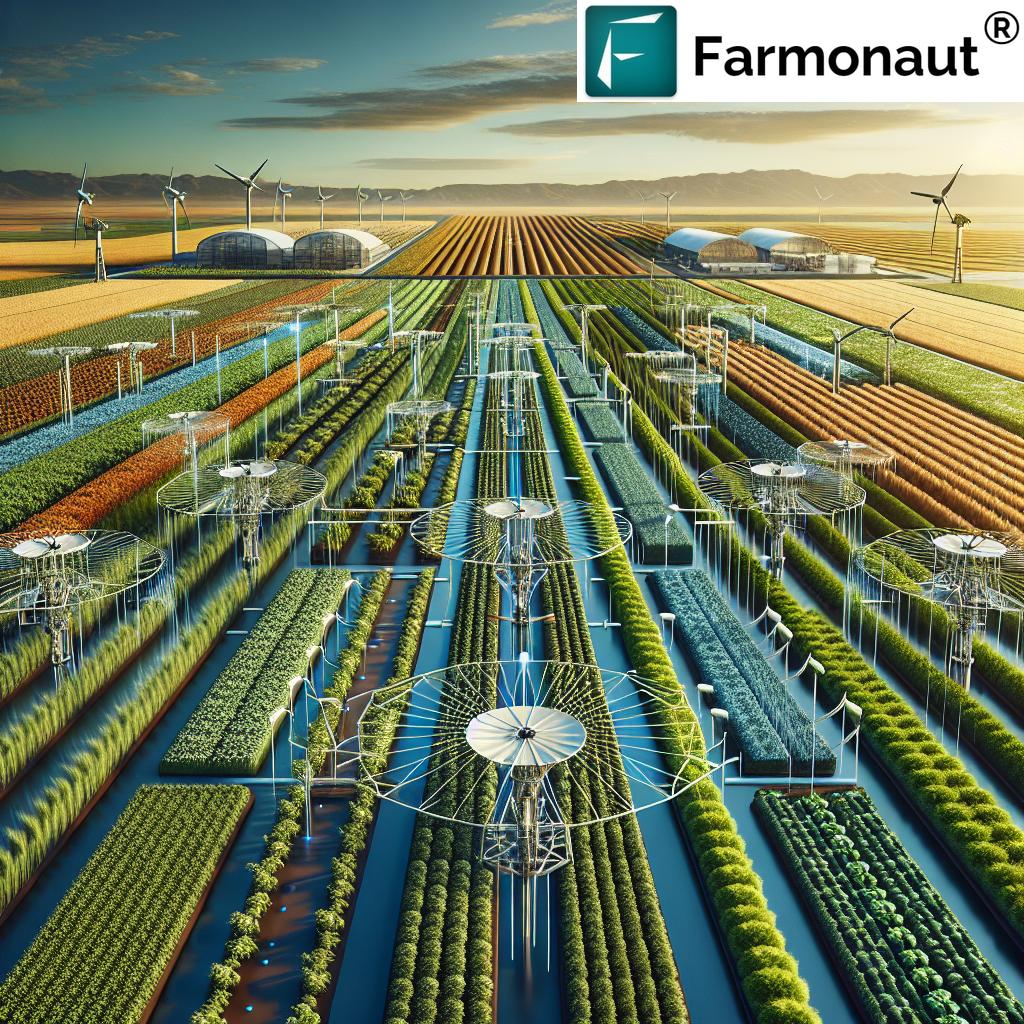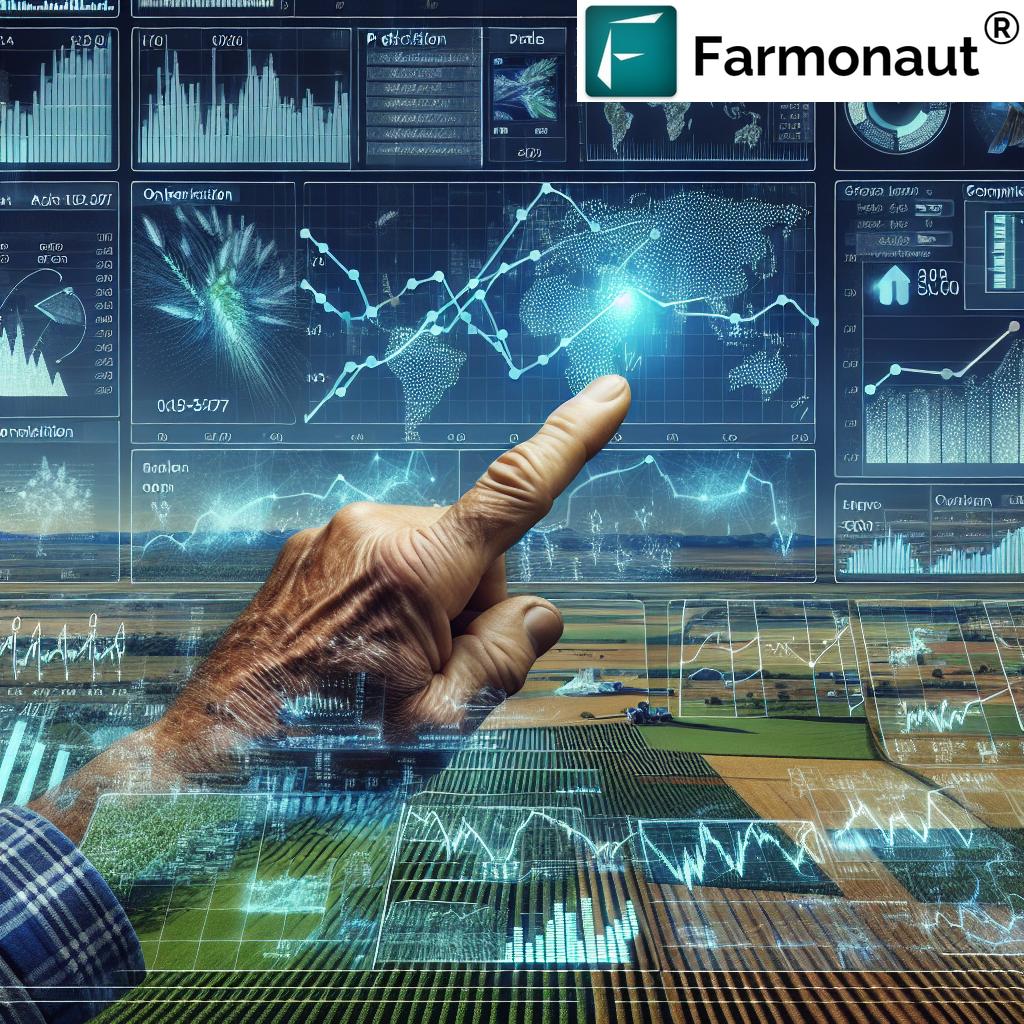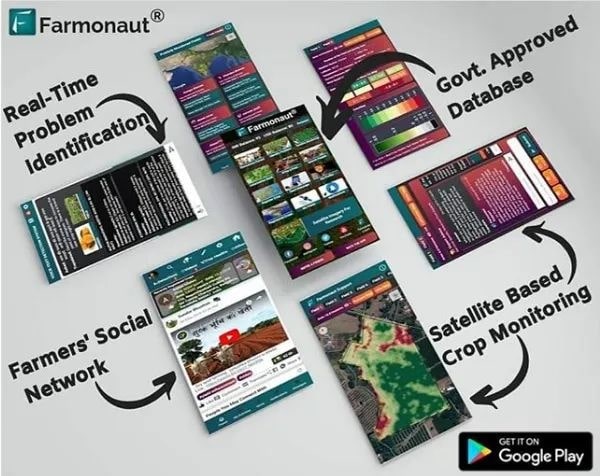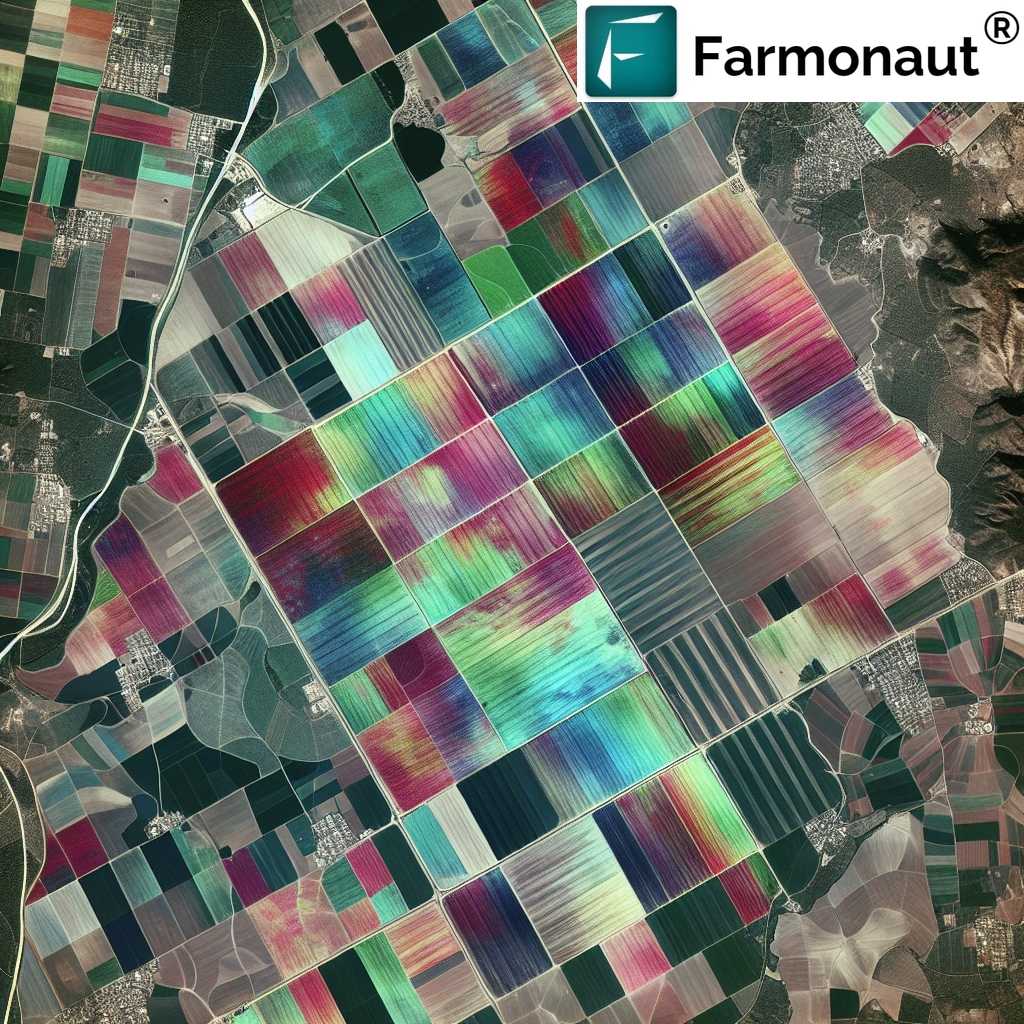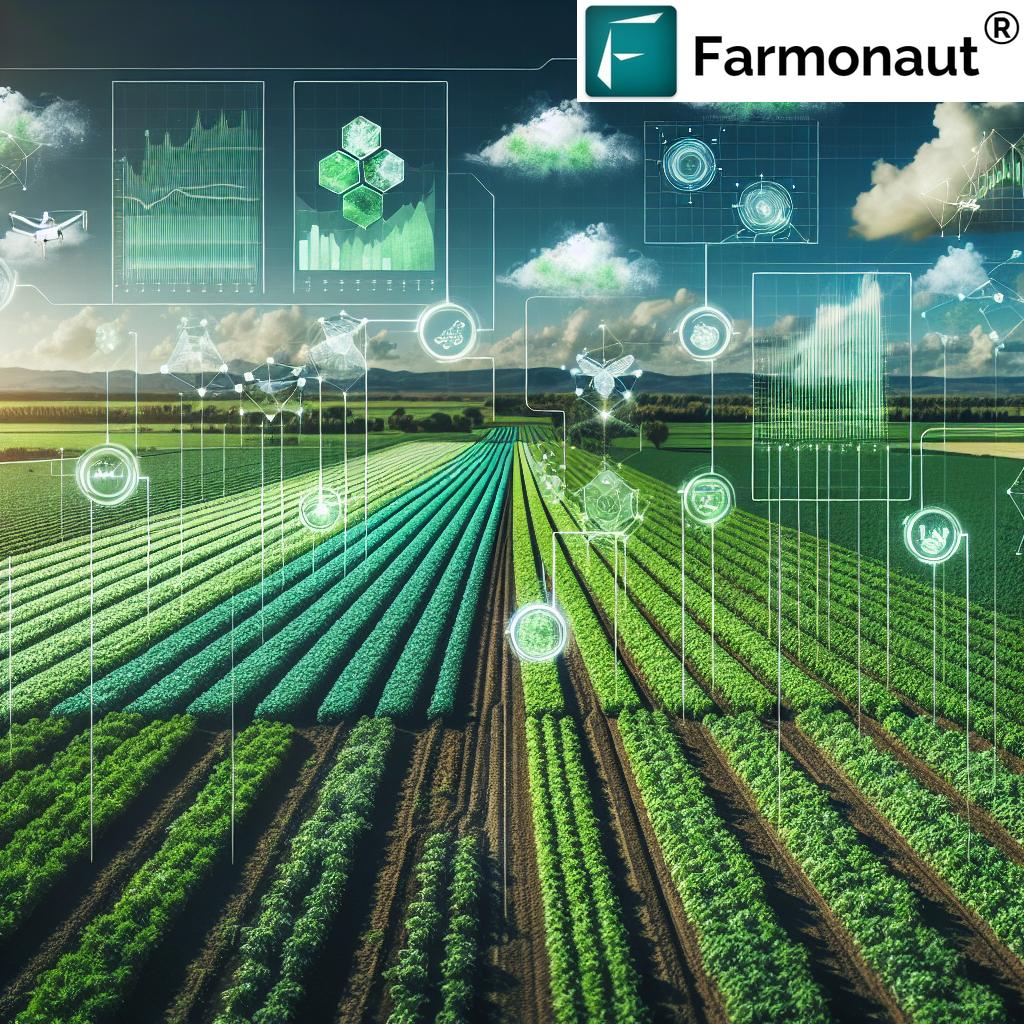Table of Contents
“Smart irrigation systems can increase crop yields by up to 30% while reducing water usage by 20%.”
Modern Farming Technology: 12 Shocking Yield Boosts!
Agricultural innovation is evolving at a breathtaking pace, with modern farming technology fundamentally reshaping the way we approach crop production, soil health management, and sustainable agriculture practices. As pressure mounts to feed a rapidly growing population and combat the challenges posed by climate change, the integration of precision agriculture solutions, smart irrigation systems, and AI-based decision tools stands out as a game-changer for global agriculture and forestry.
In this exhaustive overview, we explore how cutting-edge technologies—from satellite imagery and automated machinery to vertical farming techniques and blockchain traceability—are increasing crop yields, reducing environmental impact, and driving unparalleled operational efficiency. Whether you’re a farmer, agribusiness leader, policymaker, or simply curious about the future of agriculture, this guide provides critical insights into the remarkable advancements transforming modern farming.
Farmonaut: Transforming Farming with Modern Technology
At the forefront of modern farming technology, Farmonaut is dedicated to making precision agriculture truly accessible. Our goal is simple yet ambitious: empower farmers globally through a suite of data-driven tools—from satellite-based crop health monitoring to AI-powered advisory, blockchain product traceability, fleet management, and carbon footprint tracking. Here’s how Farmonaut is helping farmers and agribusinesses enhance yields, reduce resource usage, and promote sustainability:
- Satellite Imagery: We provide real-time crop health insights using advanced satellite images, helping farmers optimize irrigation, fertilizer, and pesticide application for higher productivity.
- Jeevn AI Advisory: Our AI-powered platform offers personalized farm management suggestions, utilizing weather data, soil moisture, disease alerts, and best agricultural practices.
- Blockchain Traceability: We ensure supply chain transparency, track agricultural products securely from farm to consumer, enhancing food safety and trust.
- Fleet Management & Resource Optimization: Through fleet and resource management tools, we help agribusinesses streamline logistics, reduce waste, and lower operational costs.
- Carbon Footprinting: We support environmental sustainability efforts by tracking and reducing carbon emissions from farm operations.
Our web, Android, and iOS apps, along with API integrations (FarmonautAPI | Developer Docs), ensure seamless access for farmers, enterprises, and government institutions world-wide. Explore effective farm management and plantation advisory for improved yields and resource efficiency.
How Farmonaut’s Satellite Technology is Revolutionizing Land Use in Agriculture
Modern Farming Technology: 12 Shocking Yield Boosts
Let’s dive deeper into the top 12 modern farming technologies and precision agriculture solutions that are delivering transformative yield boosts and redefining efficiency, sustainability, and profitability for farmers and the entire agriculture and forestry sector.
1. Precision Agriculture Solutions: Maximizing Efficiency, Reducing Waste
Precision agriculture leverages GPS-guided equipment, IoT sensors, and advanced data analytics to monitor and manage field conditions with pinpoint accuracy. With the integration of platforms like Farmonaut’s satellite imagery and AI-powered insights, we can analyze soil health, identify crop stress indicators, and optimize input application (fertilizer, irrigation, pesticides) exactly where and when needed. This minimizes resource wastage, reduces environmental impact, and leads to consistently higher and more predictable yields.
- Improves input efficiency (fertilizer, pesticides, water)
- Identifies micro-variations in field conditions
- Precision seeding and application minimizes resource usage
- Enhances long-term sustainability by preserving soil health
Did you know? Farmonaut’s real-time, AI-driven recommendations can help you reduce fertilizer use while boosting yields, all through easy-to-use digital tools.
Explore Farmonaut’s Advanced Crop Monitoring & Yield Prediction
2. Agricultural Drones and UAVs: Next-Level Monitoring and Application
Drones (Unmanned Aerial Vehicles – UAVs) are revolutionizing field monitoring and precise input application. Agricultural drones capture high-resolution multispectral imagery, enabling us to detect early signs of nutrient deficiency, pest infestation, and diseases long before they’re visible to the naked eye. Their use extends to targeted spraying, reducing chemical use and drift, while improving crop health and boosting productivity.
- Rapid, accurate crop surveys
- Precision spraying minimizes chemical use
- Early detection means proactive intervention
- Improved decision-making with real-time data feeds
3. Automated Farm Machinery: Efficiency and Precision at Scale
The era of automated farm machinery—including self-driving tractors, planters, and harvesters—is transforming farm operations. These smart machines, guided by GPS and AI, can operate 24/7 with minimal oversight, delivering unmatched efficiency and minimizing labor costs. Advanced equipment management tools (like Farmonaut’s fleet solutions) ensure optimal resource usage and timely task execution, leading to significant cost savings and yield stabilization.
- Consistent performance in planting, spraying, and harvesting
- Labor shortage issues mitigated with automation
- Minimized operational delays and human error
Efficient farm resource utilization is vital. Explore Farmonaut’s Fleet Management tools for smarter machinery logistics and reduced costs.
The Role of Artificial Intelligence in Agriculture – Farmonaut | Agritecture | Joyce Hunter
“Precision agriculture boosts fertilizer efficiency by 15%, leading to higher yields and lower environmental impact.”
4. Vertical Farming Techniques: Optimizing Space for Productivity
Vertical farming takes urban food production to new heights—literally. By growing crops in stacked layers using hydroponic or aeroponic systems within controlled environments, we maximize yield per square meter while dramatically reducing water usage and minimizing transportation emissions. Vertical farming techniques enable year-round production by buffering crops from unpredictable weather, pests, and diseases, and are a cornerstone of resilient controlled-environment agriculture (CEA).
- Space-efficient and scalable—perfect for urban farming
- Uses 70–95% less water than traditional agriculture
- Enables precise nutrient management and zero soil degradation
- Local production decreases food miles and CO2 emissions
For expert plantation, afforestation, and agricultural advisory—including CEA—use Farmonaut’s Crop Plantation & Forest Advisory solutions.
5. Smart Irrigation Systems: Water-Smart Farming for Every Climate
Smart irrigation systems harness sensor data and weather analytics to deliver the right amount of water to crops when they need it most. By monitoring soil moisture, crop growth stages, and short-term weather forecasts, these systems automatically adjust schedules, reducing water waste and ensuring healthy,consistent yields—especially critical in drought-prone or water-scarce regions.
- Automated, data-driven irrigation scheduling
- Reduces water consumption by up to 20–40%
- Prevents both under- and over-irrigation for optimal crop health
- Contributes to sustainable groundwater usage
Farmonaut | Making Farming Better With Satellite Data
6. AI in Agriculture: Data-Driven Decisions and Predictive Analytics
The integration of artificial intelligence (AI) and machine learning (ML) is perhaps the most revolutionary aspect of modern farming technology. Applications like Farmonaut’s Jeevn AI Advisory System digest massive amounts of satellite, sensor, and weather data to predict optimal planting times, forecast pest outbreaks, estimate yield, and suggest timely interventions. This level of intelligence accelerates informed decision-making and maximizes the economic and environmental outcomes of every field operation.
- Provides real-time, field-specific recommendations
- Continuously learns from new data and feedback
- Predicts weather-related risks for proactive management
- Reduces input costs while maximizing yields
7. Agricultural Robotics: Automating Repetitive and Labor-Intensive Tasks
Agricultural robotics—including advanced weeders, planters, and autonomous vehicles—streamline labor-intensive processes, allowing for 24/7 operation and extreme precision. Robotics help us address rural labor shortages and slash the cost of repetitive field tasks, all while increasing accuracy and safety. Noteworthy robotic systems like those developed by FarmWise harness AI and computer vision for selective weeding and targeted input application.
- Dramatically reduces labor requirements
- Improves safety and consistency
- Enables precise, chemical-free weed management
8. Controlled-Environment Agriculture (CEA): Weatherproofing Food Production
Controlled-Environment Agriculture (CEA)” encompasses greenhouses, vertical farms, and indoor “plant factories”—all designed to optimize conditions for maximum plant health and yield. By marrying engineering with advanced horticultural techniques, we can deliver locally grown, nutrient-rich food year-round while minimizing land and resource requirements. CEA not only boosts productivity but also mitigates supply chain disruptions linked to climate variability.
- Complete control over light, temperature, humidity
- Efficient water and resource use (smart irrigation integration)
- Year-round production and supply chain stability
- Reduces the risk of crop failure due to climate extremes
9. Nanotechnology and Soil Health Technologies: Microscopic Innovations, Macro Impacts
Nanotechnology in agriculture brings the power of nanosensors and engineered nanomaterials to monitor soil health, nutrient balance, and even pathogen presence at an extraordinary level of detail. Innovative nanosensors can assess nitrate and phosphate levels or track water retention in the soil, enabling us to make hyper-targeted adjustments in fertilizer and irrigation regimes. This not only increases input efficiency but also reduces environmental contamination.
- Real-time, in-field diagnostics on soil and crop health
- Improved accuracy in nutrient and irrigation management
- Lower risk of over-fertilization and chemical runoff
10. Renewable Energy Integration: Powering Sustainable Farms
Embedding solar panels and wind turbines into farm infrastructure is fast becoming the norm. Renewable energy powers everything from irrigation pumps and automated systems to storage and data centers, helping us cut operational costs and minimize carbon footprints. By leveraging clean energy, modern farms move closer to net-zero emissions while maintaining uninterrupted productivity.
- Reduces dependency on fossil fuels and grid electricity
- Lowers long-term operational costs
- Decreases environmental impact and carbon footprint
To manage your farm’s sustainability goals, including emissions monitoring and reduction, explore Farmonaut’s Carbon Footprinting tools.
11. Blockchain for Supply Chain: Unmatched Transparency and Trust
Blockchain technology offers tamper-proof, verifiable tracking of agricultural products from field to fork. By digitizing every transaction and process step in the supply chain, blockchain ensures transparency, dramatically reduces fraud, and builds consumer and partner trust. Farmonaut’s traceability platform leverages blockchain to guarantee food origin and safety, especially crucial for premium, export, and specialty crops.
- Immutable, shared records across supply chain partners
- Enhances product authenticity and traceability
- Promotes ethical and sustainable sourcing
12. Smart Greenhouses & Automated Livestock Management
Smart greenhouses use automated climate control, water recycling, and sensor systems for optimal plant growth across all seasons. Adjusting parameters like light, humidity, and temperature ensures consistent, high-quality yields. Meanwhile, smart livestock technologies—wearable health trackers and automated feeders—safeguard animal health, minimize feed waste, and optimize growth cycles.
- Efficient use of water and nutrients in plant production
- Automated health and nutrition monitoring for livestock
- Reduces disease outbreaks and boosts overall farm profitability
For robust management across several farms or plantations, explore Farmonaut’s Large-Scale Farm Management solutions.
Comparative Technology Impact Table
| Technology/Method | Description | Estimated Yield Boost (%) | Estimated Cost Savings (%) | Key Sustainability Benefit |
|---|---|---|---|---|
| Precision Agriculture Solutions | GPS, IoT sensors & analytics for site-specific input management | 10–25% | Up to 30% | Reduces input waste and environmental impact |
| Agricultural Drones & UAVs | Remote crop health monitoring & precision spraying | 15–20% | 10–15% | Minimizes chemical drift, early pest/disease detection |
| Automated Farm Machinery | Autonomous tractors & harvesters optimize field operations | 12–18% | 15–25% | Reduces labor need & operational errors |
| Vertical Farming Techniques | Stacked crop production in controlled environment with hydro/aeroponics | 20–50% | Up to 40% | Extreme water use reduction, urban food access |
| Smart Irrigation Systems | Sensor-driven water scheduling, weather-responsive | 10–30% | 10–20% | Decreases water usage, improves drought resilience |
| AI in Agriculture | Data-driven decision tools, predictive analytics | 10–20% | 10–15% | Reduces overuse of inputs, improves resource allocation |
| Agricultural Robotics | Automated weeding, planting & harvesting | 15–25% | 15–30% | Lowers labor demand, chemical-free weed control |
| Controlled-Environment Agriculture (CEA) | Greenhouses, indoor farming with full crop environment control | 30–60% | Up to 40% | Year-round, climate-resilient production |
| Nanotechnology & Soil Health Technologies | Nanosensors for real-time soil monitoring/improvement | 10–15% | 5–12% | Hyper-targeted nutrient management |
| Renewable Energy Integration | Solar & wind for farm power needs | Not direct | 20–45% (energy costs) | Lowers greenhouse gas emissions |
| Blockchain Traceability | Secure, verifiable supply chain data tracking | 3–8% | 5–10% | Reduces fraud, enhances food safety/quality |
| Smart Greenhouses & Livestock | Climate-controlled, sensor-integrated crop & animal monitoring | 20–40% | 15–25% | Resource-efficient, boosts animal welfare |
FAQ: Modern Farming Technology & Precision Agriculture
What is modern farming technology?
It encompasses innovative solutions—including satellite-based monitoring, IoT devices, drone surveillance, AI/ML insights, automated machinery, CEA, and blockchain—designed to enhance productivity, efficiency, and sustainability in agriculture. It enables real-time monitoring, targeted input application, data-driven farming, and improved resource management.
How does precision agriculture improve yields?
By deploying field sensors, satellite imagery, and GPS-guided equipment, precision agriculture directs water, nutrients, and protection exactly where crops need it. The result is enhanced fertilizer efficiency, reduced pest/disease pressure, lower resource waste, and yield increases of 10–25%.
What is the role of AI in agriculture?
AI in agriculture enables advanced data analytics, predictive modeling, disease risk forecasting, and personalized crop management advice. With platforms like Farmonaut’s Jeevn AI, farmers receive tailored recommendations, boosting efficiency and minimizing guesswork in farm operations.
How do smart irrigation systems optimize water use?
Smart irrigation systems collect real-time soil moisture and climatic data to automate water delivery. They help avoid both under- and over-irrigation, leading to water savings of up to 40% and ensuring optimal crop health.
Can modern farming techniques help address climate change?
Definitely. By maximizing resource efficiency, minimizing waste, reducing chemical runoff, and integrating renewable energy, modern farming technology is central to climate-resilient food production.
How does blockchain benefit agriculture supply chains?
Blockchain brings transparency and immutability to every step of the food supply chain. This ensures product authenticity, improves food safety, and builds trust among retailers, processors, and end consumers.
Conclusion & Next Steps
As stewards of our food systems, embracing modern farming technology is our collective responsibility and opportunity. The advances outlined here—precision agriculture solutions, agricultural drones, smart irrigation, vertical farming techniques, AI-powered analytics, automated farm machinery, and blockchain traceability—offer not only shocking yield boosts but also pathways to resilience, sustainability, and global food security.
At Farmonaut, we’re committed to democratizing access to advanced agricultural technology—helping farmers, agribusinesses, and governments harness actionable insights, optimize resource use, and promote long-term ecological balance. Whether you manage 2 acres or 2,000, connect with us today to access the future of farming.
- Boost yields and cut costs with Farmonaut’s farm management solutions.
- Protect the planet by tracking farm emissions and resource use—start here.
- Enhance supply chain integrity for food, fiber, or timber with traceability tools.
- Custom solutions and API access available for developers and enterprises—learn more.
The future of food, forestry, and agriculture is data-driven, sustainable, and bright—thanks to technology, and thanks to you.


